The Chopard Alpine Eagle Cadence 8HF in Titanium, And What High-Frequency Means
This watch is a commendable milestone culminating Chopard's expertise in high-frequency timepieces.
In 2012, Chopard made waves with the introduction of the L.U.C 8HF, featuring the groundbreaking L.U.C 01.06-L calibre with a silicon escapement, oscillating at an impressive 8Hz (57,600 vibrations/hour), double the speed of most mechanical movements. Notably, it became the first high-frequency calibre to receive chronometer certification, marking a significant milestone. Encouraged by this success, Chopard continued its innovation journey, resulting in the 2014 release of the L.U.C 8HF Power Control, powered by the L.U.C 01.09-L movement. Subsequently, the Superfast Power Control Porsche 919 HF edition, equipped with the 01.11-M calibre, debuted in 2017.
In 2021, Chopard’s high-frequency Calibre 01.12-C movements took centre stage in the limited Alpine Eagle Cadence 8HF in titanium. In 2023, following a decade of sporadic high-beat models in limited editions ranging from 100 to 250 pieces, Chopard introduced a non-limited production model – the Alpine Eagle Cadence 8HF ref. 298600-3020, featuring a sleek black dial. Additionally, the brand announced the exclusive use of this high-frequency, chronometer-certified calibre in the Alpine Eagle Cadence 8HF models. Let’s dive into our thoughts with this in-depth article and extensive video review. But first, a brief discussion on the frequency of watch movements.
High-Frequency in watchmaking
As our regular readers know, a watch’s frequency is determined by the number of oscillations performed by its regulating organ – the hairspring and balance wheel – over time. This measurement is typically expressed in either the movement’s total Hertz (Hz) or the specific number of vibrations per hour (often expressed with vph). The current standard is 28,800 vibrations/hour or 4Hz (which corresponds to 8 semi-oscillations or vibrations per second), but Seiko referred to this frequency not too long ago as “Hi-Beat.” Love the progress.
High-frequency movements offer increased accuracy as their oscillators divide time into smaller spans, providing a higher resolution. However, the faster a movement runs, the more wear each component endures, leading to shorter service intervals and reliability challenges. For instance, the high-frequency 5Hz El Primero chronograph movement was modified to a 4Hz frequency for use in the Rolex Daytona, as the Crown was (and still is) hesitant to adopt technology lacking proven reliability.

Why does a high-frequency movement increase accuracy? High-frequency movements beating at 5 hertz became popular in the 1960s, with the Girard-Perregaux Gyromatic and the Longines Ultra-Chron, followed by the El Primero chronograph in 1969. Running at 36,000 vibrations per hour or more, these movements, in principle, are like statistics. The more data you collect, the more precise the measurement of an average will be. So, if you make an analogy with watchmaking, the more beats you generate, the better the precision – the errors of one beat compensating for the errors of another. And pragmatically, it’s mostly about rate stability. The regulating organ is subjected to multiple interferences, such as temperature, magnetic fields and, of course, shocks. With this in mind, the greater the speed or rate, the less responsive it will be to outside interferences. With more oscillations per second, the balance will be less influenced and will be able to recover quicker from these disturbances than a movement beating at a slower rate. It means that a high-frequency movement is more stable and thus more precise.
Another challenge is the power reserve, as high-frequency movements require more energy – just like a car’s engine, the faster a movement runs, the more energy it consumes. To achieve an extended power reserve of up to 80 hours with its Powermatic 80, the Swatch Group adjusted the ETA 2824 from its original 4Hz beat rate to 3Hz (and introduced a more efficient spring barrel), a case of “downgrading” to upgrade.
Learn more about high-frequency movements in this video introducing the new edition of the Alpine Eagle Cadence 8HF, presented by our knowledgeable Frank Geelen. He vividly explains the phenomenon, offering a concise review.
The Alpine Eagle Cadence 8HF
Now, let’s explore the recent Alpine Eagle Cadence 8HF in titanium and how Chopard addresses issues of reliability and autonomy.
The concept of high-beat is seamlessly integrated into the Alpine Eagle collection, which debuted in 2019 as a direct successor to the beloved Chopard St. Moritz sports watch line from the 1980s. Positioned as Chopard’s response to the trend of integrated bracelet sports watches, the Alpine Eagle series exudes elegance and sophistication yet retains the sporty character.
The new Alpine Eagle Cadence 8HF aligns with the collection’s aesthetic and design codes but now flaunts a powerful colour scheme. The specifications remain consistent: a 41mm diameter x 9.75mm thickness; a screw-down crown adorned with a compass rose protected by crown guards; and a sapphire crystal exhibition caseback proudly displaying Cadence 8HF. The satin-brushed bezel, case middle, and wide bracelet links offer a polished contrast, with the central cap and case bevels gleaming in sophistication. The bezel’s eight screws, set at a tangent, add to the unique look.
While other Alpine Eagle models boast Chopard’s Lucent Steel A223 alloy or ethical gold, the Alpine Eagle Cadence once again takes a bold step by incorporating titanium. This choice enhances the watch’s lightweight feel compared to Lucent Steel and imparts a slightly darker hue. The result is a timepiece that looks elegant and feels delightful to touch and comfortable on the wrist. It is a versatile and user-friendly watch. The bracelet is closed with a concealed triple-folding clasp offering no fine adjustment, a pity.
Now in a striking “pitch black” colour, the result of stamping and galvanic treatment, the dial retains the sunburst pattern reminiscent of an eagle’s iris. New elements include an orange arrow-type super-smooth-running seconds hand with an eagle’s feather counterweight, an orange “high-frequency” arrow symbol, and matching minutes track markings mixed with white ones. These subtle pops of colour complement the black background, creating a harmonious visual balance. The hour and minute hands, applied baton hour markers and Roman numerals at 12 o’clock are rhodium-plated and treated with Grade X1 Super-LumiNova for enhanced visibility in low light. And the often-maligned aperture at 4:30, displaying the white date on a black background, tries blending into the dial’s surface.
With a water resistance of 100m, the Alpine Eagle Cadence 8HF achieves the desired blend of sporty elegance and chic design, delivering a watch that is visually captivating and fully functional in various settings.
Speaking of functions. It’s crucial to emphasize once more that the Calibre 01.12-C, which powers the new Alpine Eagle Cadence 8HF, shares a significant trait with Chopard’s inaugural high-frequency marvel, the L.U.C 01.06-L: it is COSC-certified, marking a noteworthy achievement. Regulating high-frequency movements poses a considerable challenge, demanding time, experience, and expertise. The additional effort to ensure they meet COSC standards, involving a rigorous fifteen-day testing process in five positions and at three different temperatures, speaks volumes, and Chopard also ensures the watch lives up to wearer expectations of accuracy, even when faced with shocks and other daily “disturbances”, for which COSC never tests.
The landscape of high-frequency movements underwent a transformative shift with the advent of silicon technology, which has become more popular in the last decade. In alignment with this trend, Chopard ingeniously crafted a regulator featuring a silicon impulse pin, pallet lever, and escape wheel, with a high tooth count that translates to fewer degrees of rotation per beat. This strategic design minimizes friction to an unprecedented extent, eliminating the need for traditional watchmaking lubricants – a crucial development, given the accelerated breakdown of such lubricants in faster movements throughout history.
The balance wheel, equipped with a conventional hairspring, underwent modifications to reduce its size and inertia. Notably, it now oscillates at a streamlined amplitude of approximately 200 degrees. The regulator’s efficiency, amplified by the lightweight nature of silicon and its favourable tribological properties (wear resistance, coefficient of static and dynamic friction, and PV and limiting PV – the pressure/velocity ratio), empowered Chopard to pioneer this high-beat escapement while still delivering a generous 60-hour power reserve. This breakthrough enhances performance and ensures a prolonged and comfortable period between winding sessions.
The Alpine Eagle Cadence 8HF is definitely a model worthy of attention, especially for those in the market for a rather unique sporty timepiece that stands out from the crowd and is advanced enough – technologically – to sustain a prolonged conversation. The titanium Alpine Eagle Cadence 8HF reference joins the permanent collection and is priced at EUR 22,100. I would prefer the dial colours featured in the stainless steel version of Cadence 8HF, the removal of the date window and all the printed text on the caseback’s crystal, and a different price – all these are highly personal observations. However, since an 8Hz calibre can measure smaller fractions of a second than a conventional 4Hz movement, perhaps we shall see Chopard implementing the know-how in a chronograph. Personally, I’d love that.
For additional information, please visit chopard.com.

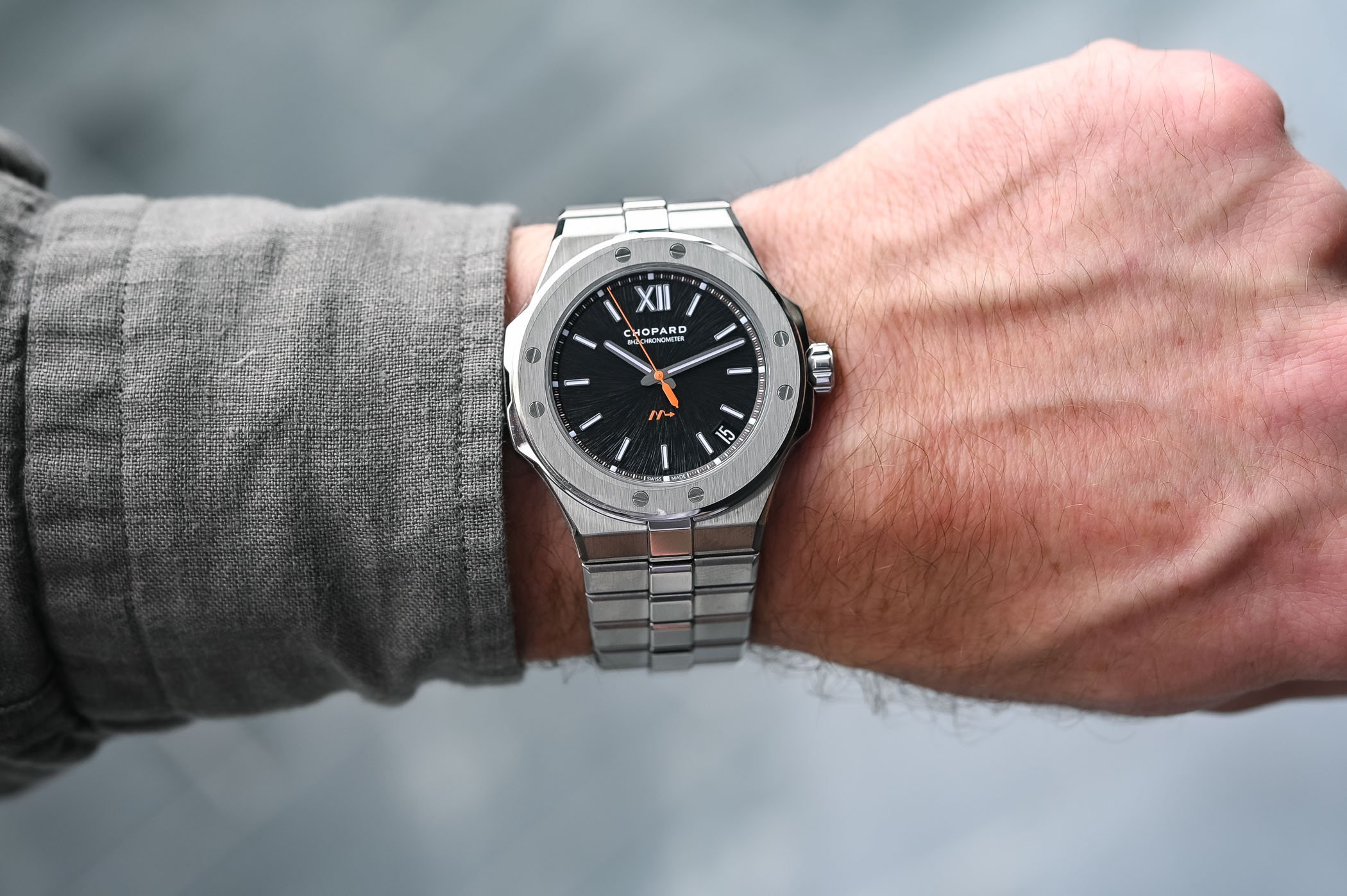




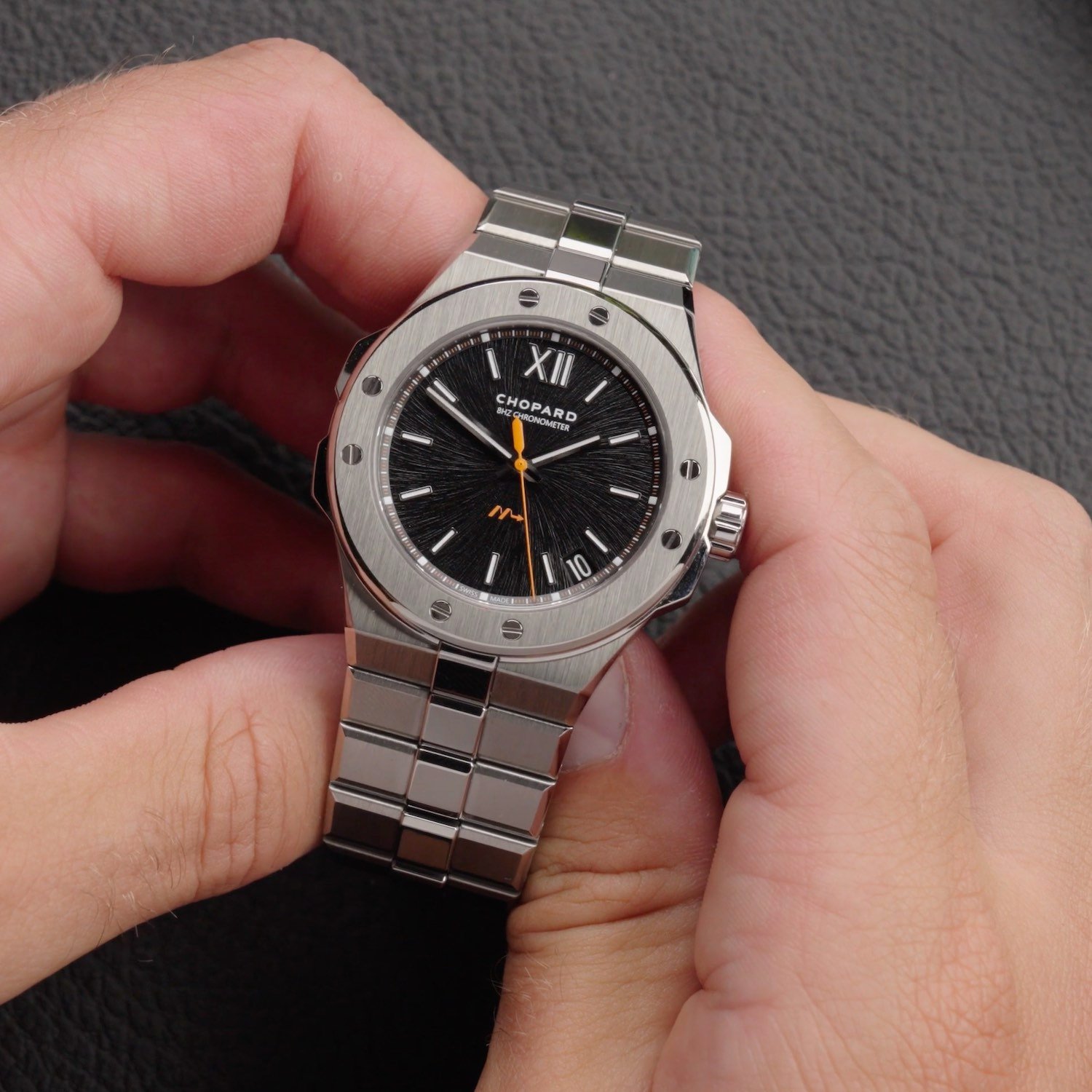
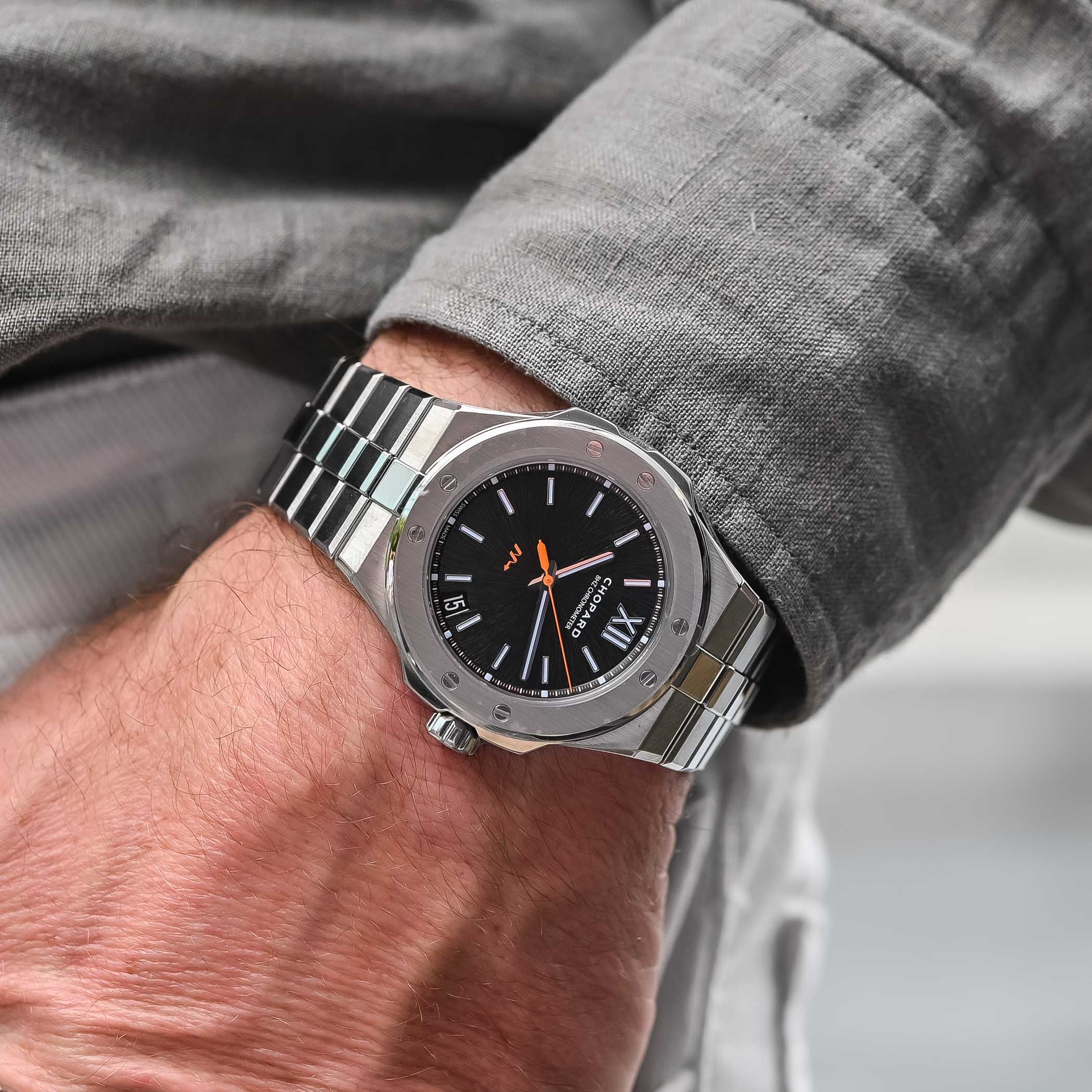
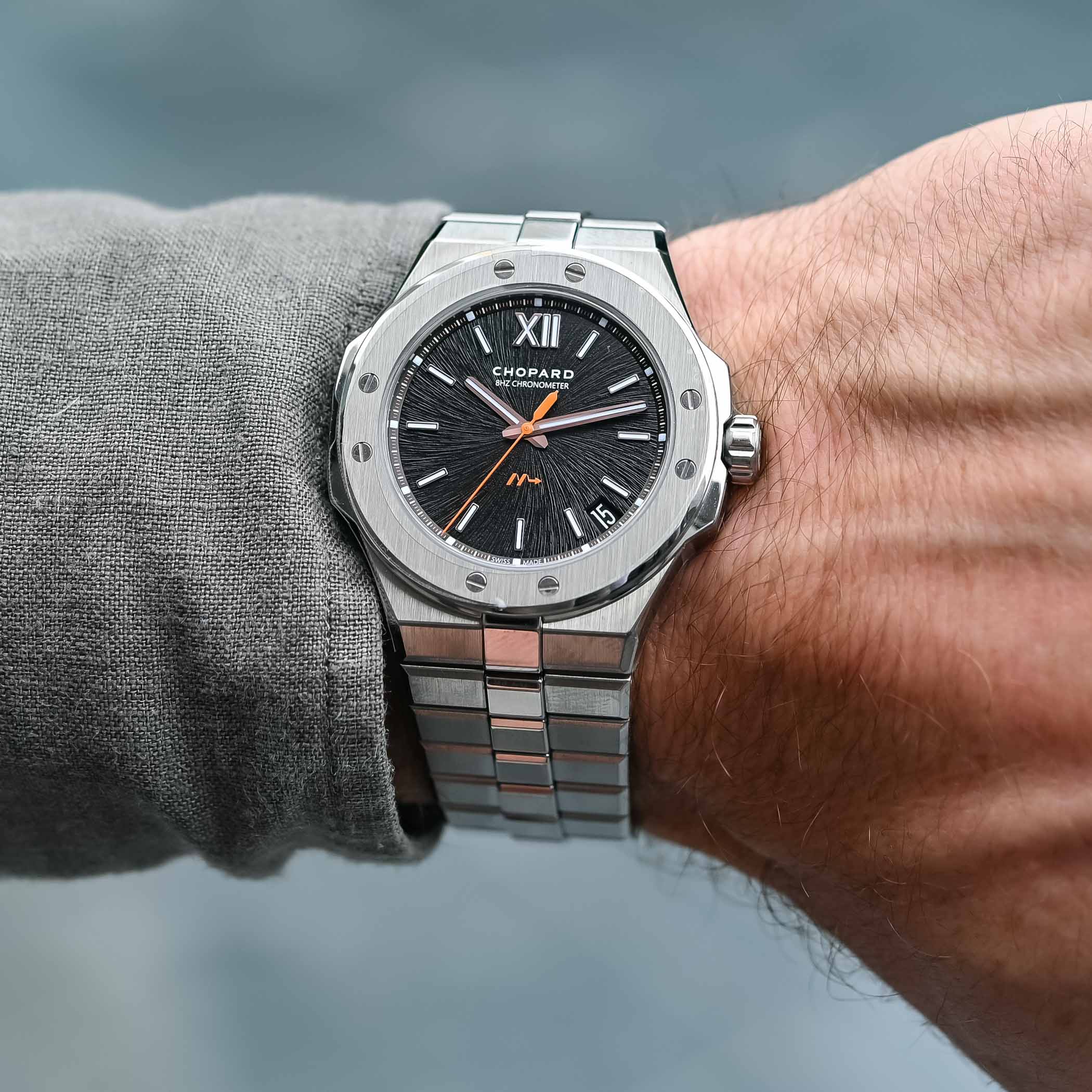


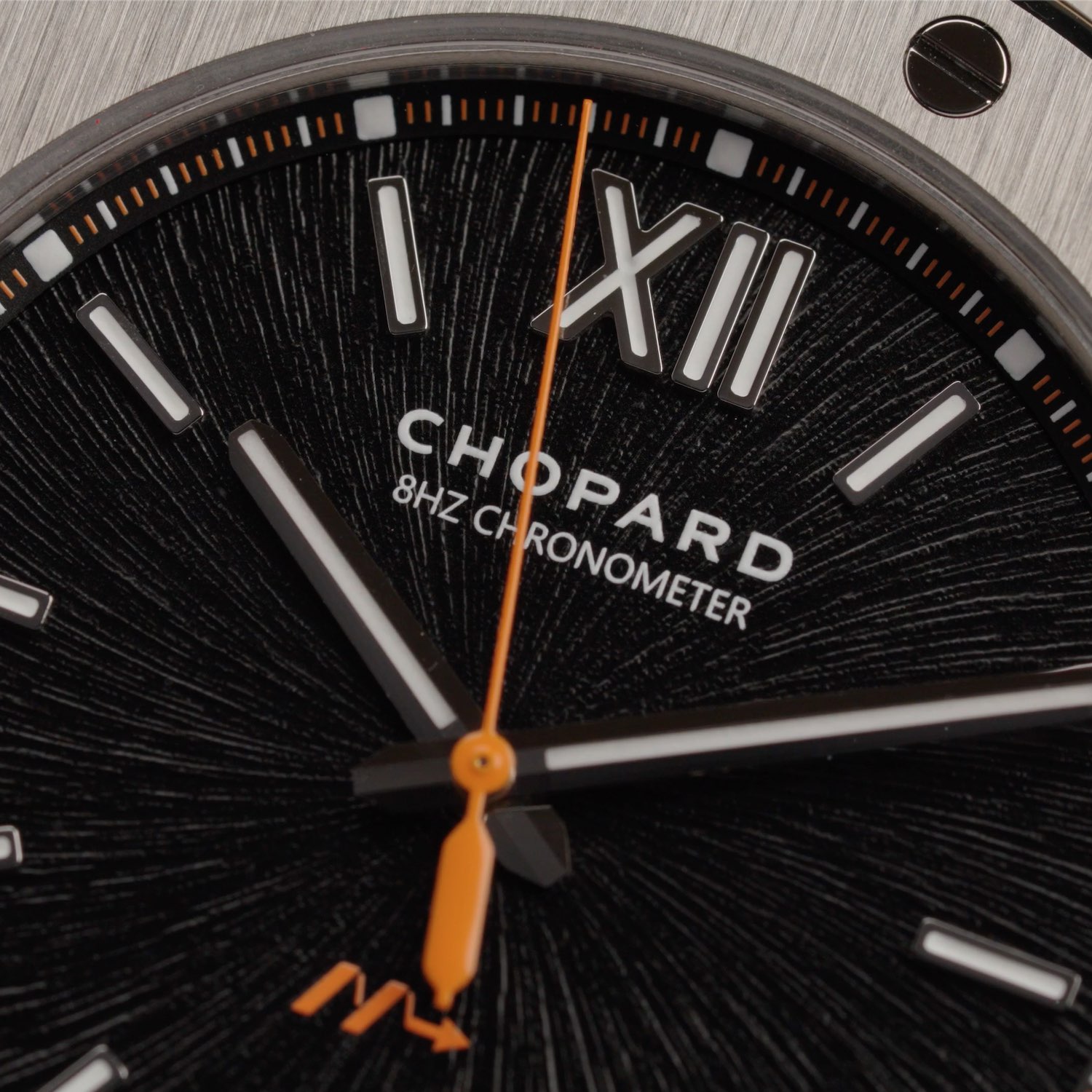
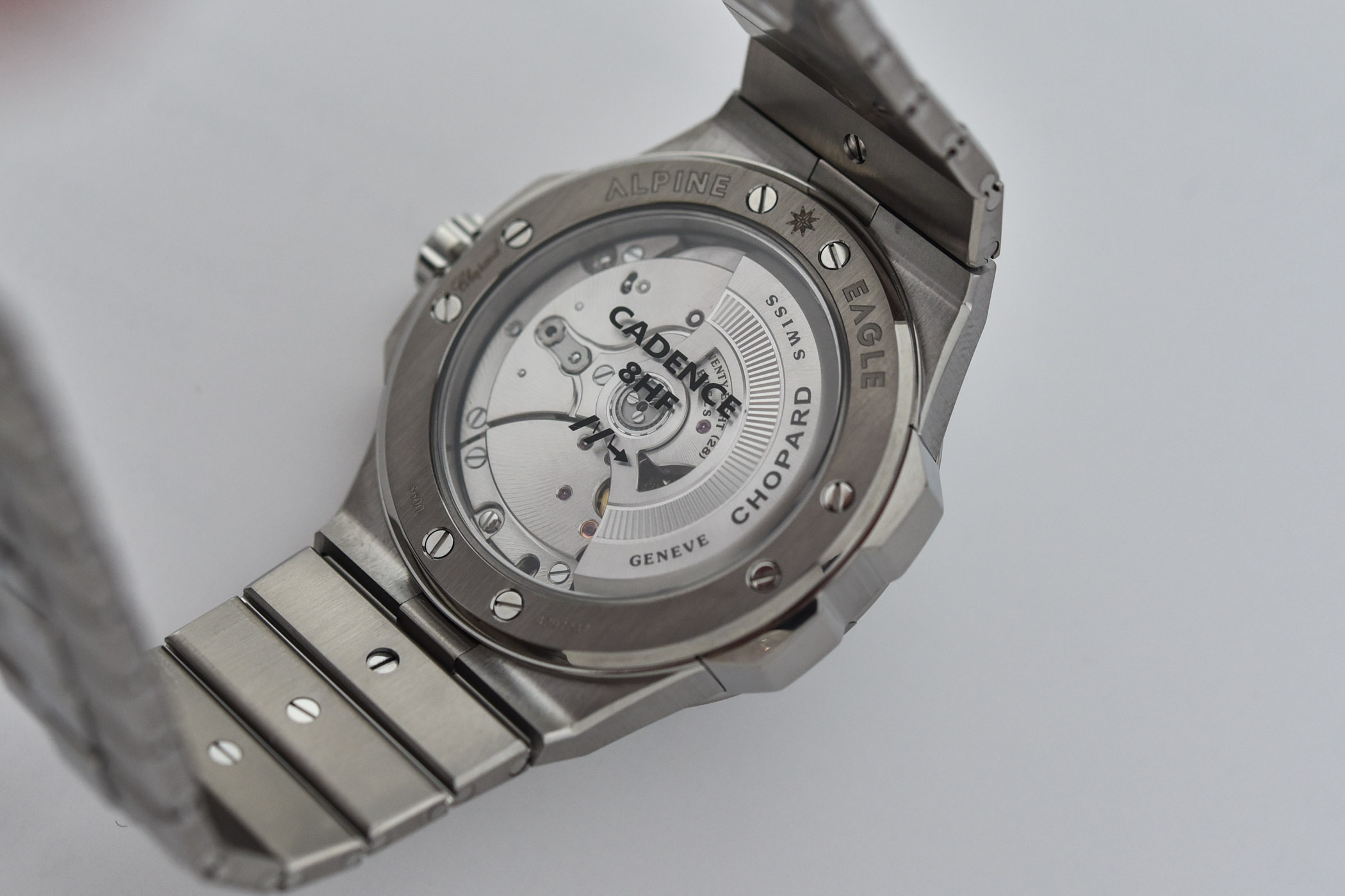
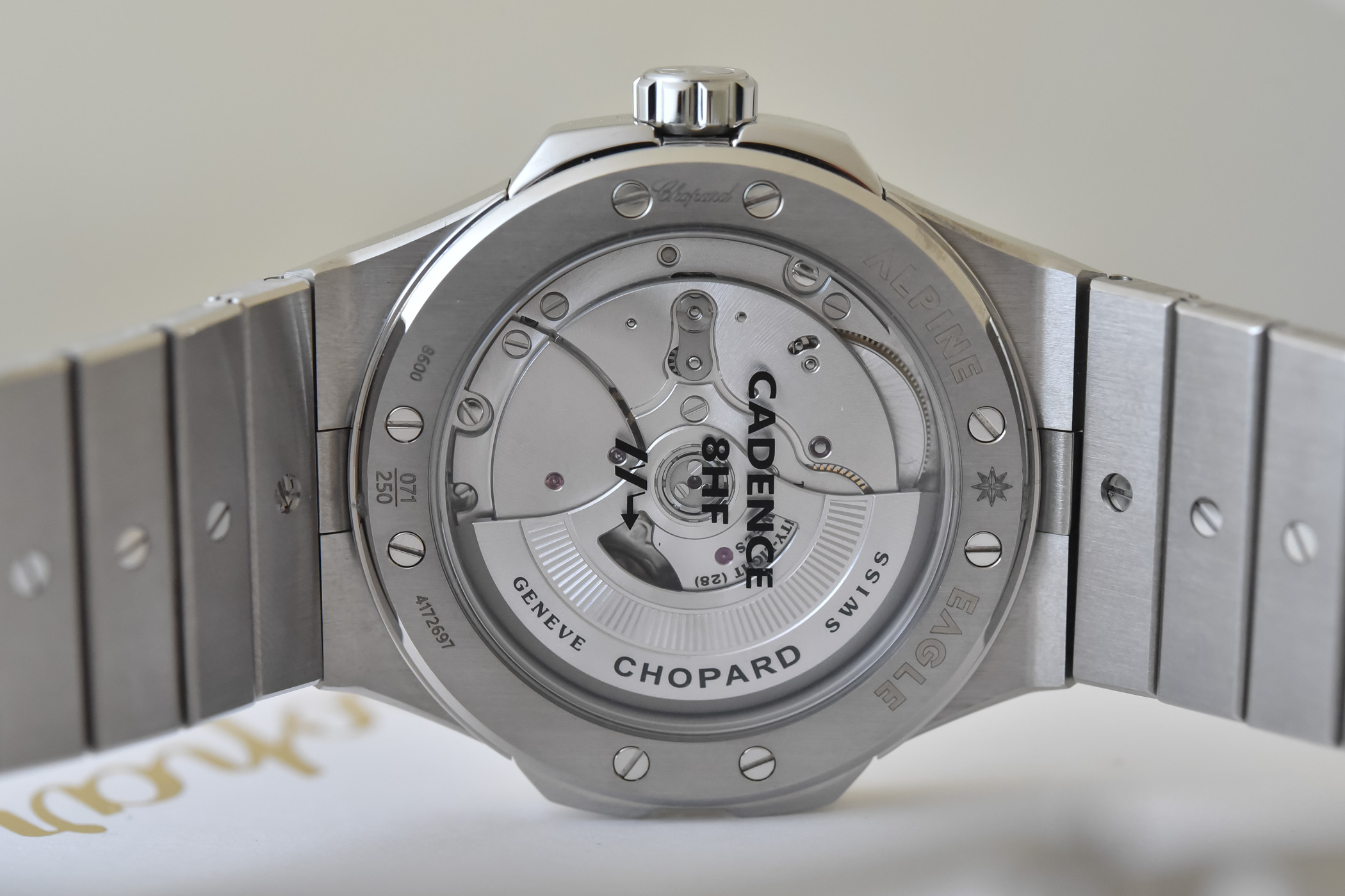
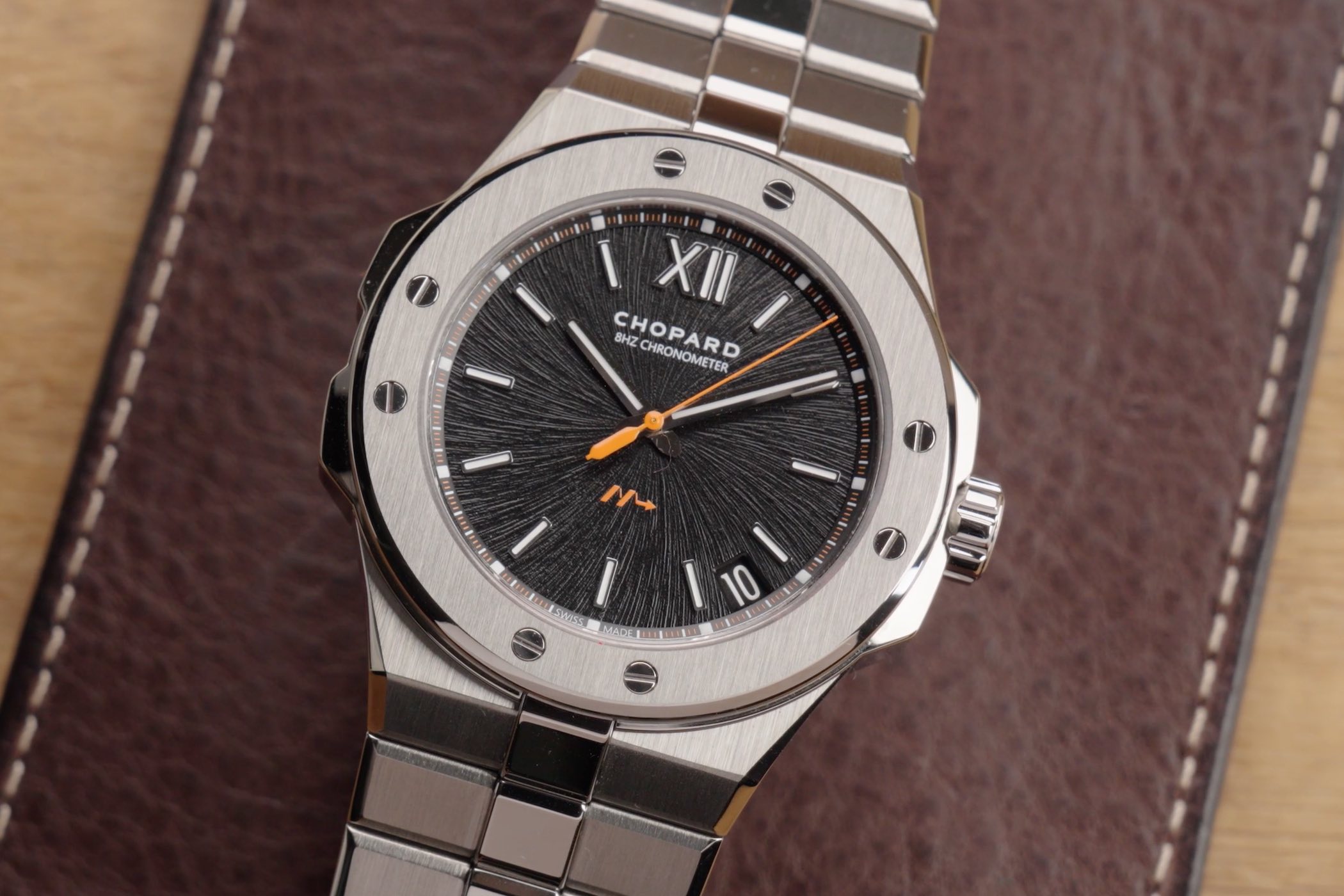
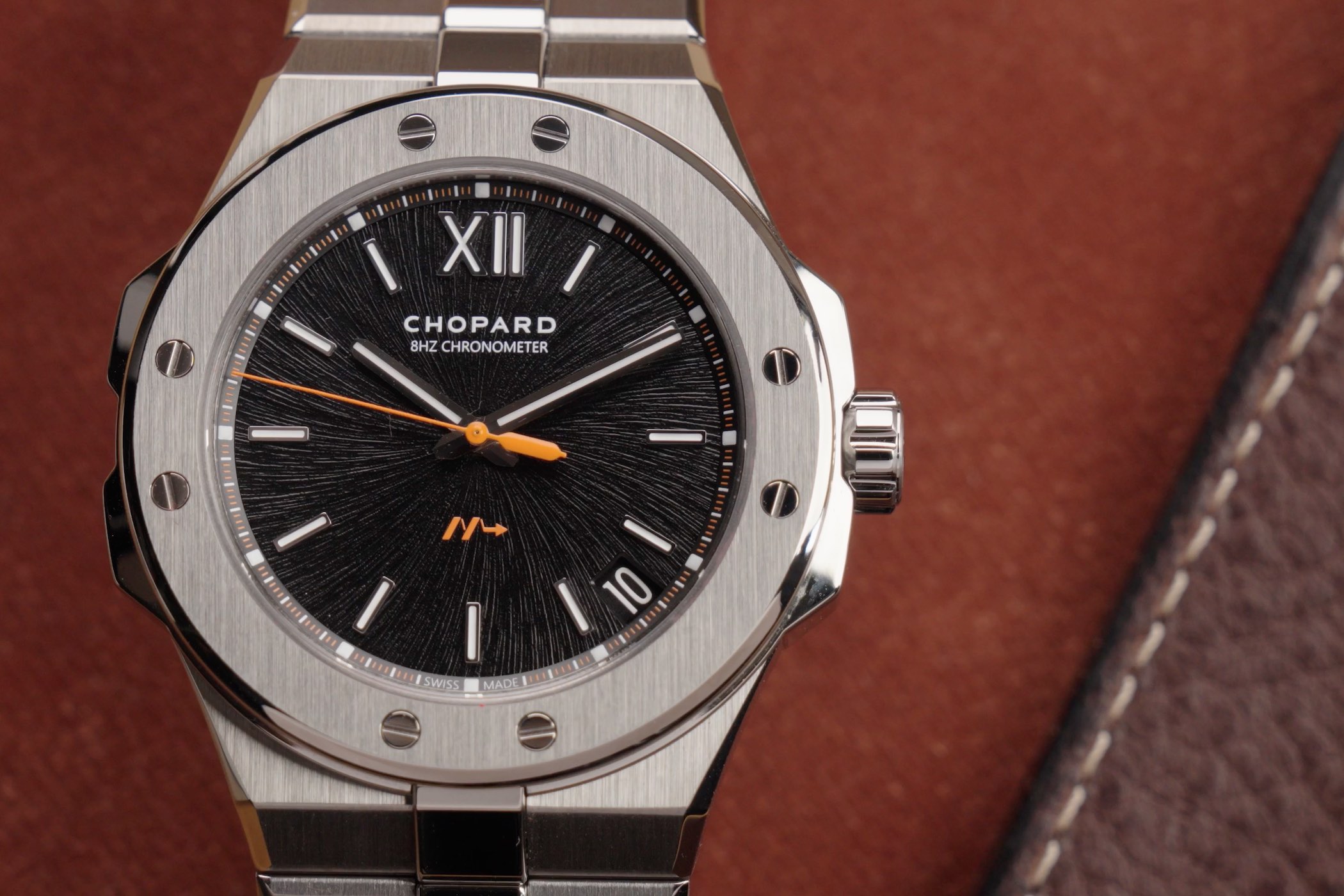

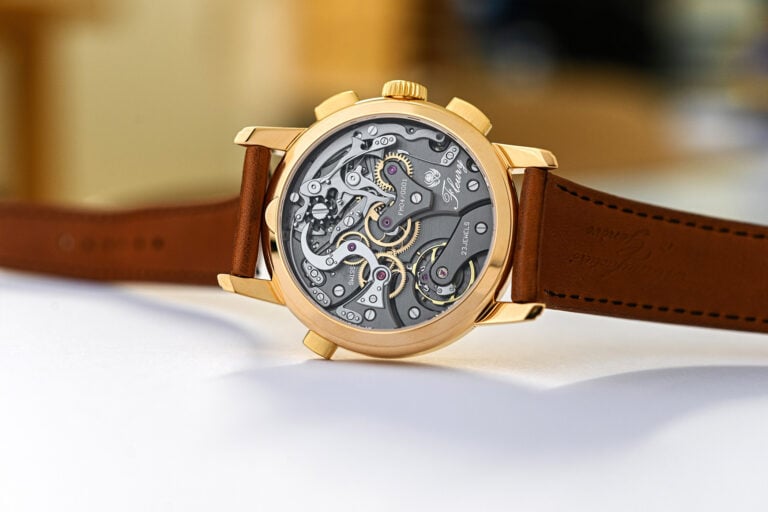
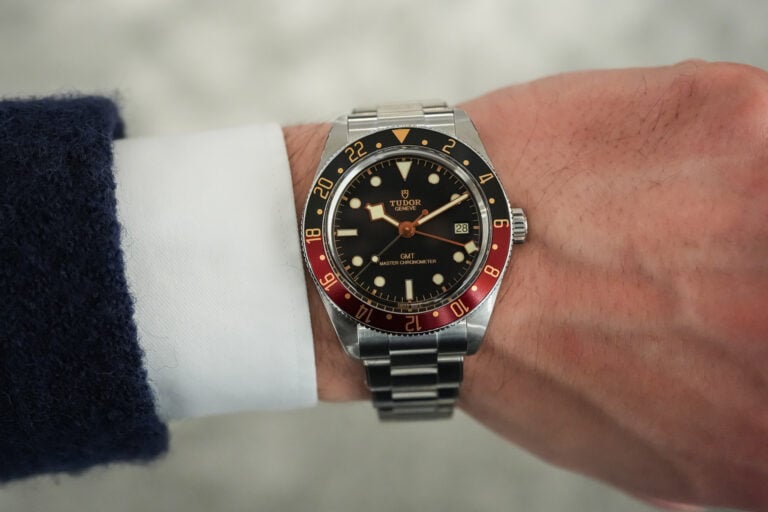
7 responses
Weirdly looking much better in this less flashy iteration.
Where did the 200 deg amplitude value come from? Did you check it with some hi-frame rate video? My experience has been better than that
A nice watch, though I prefer XPS for similar price
Often wonder what sports are involved that these “Sports Watches” are more suitable for than a basic Casio which is very light and tough and cheap to replace if damaged.
Very nice article! I really love LUC but the price is too much around 3K it would be nice.
a great watch in a better version.
I couldn’t get past the awful photography.